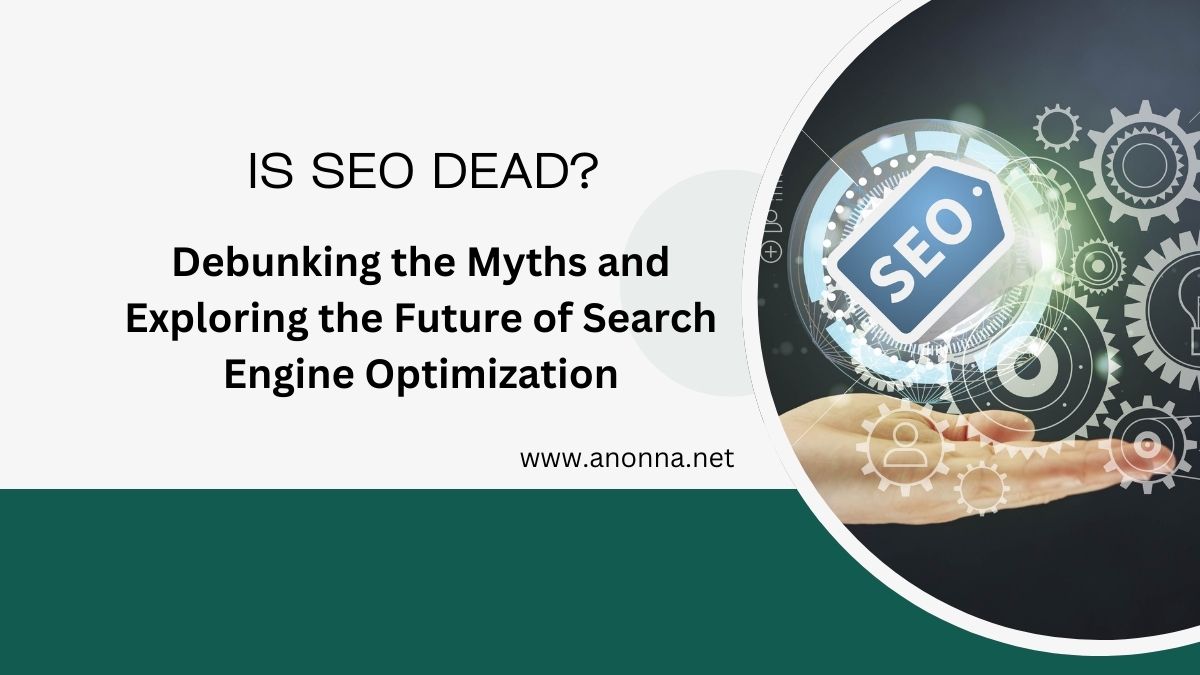
Is SEO Dead? Debunking the Myths and Exploring the Future of Search Engine Optimization
Is SEO Dead or Not, Another Debate Continues
In the world of digital marketing, one debate has raged for years: Is SEO dead? Often, they wonder whether SEO is still effective for driving organic traffic in the age of countless Google algorithm updates, AI-driven search engines, and the rise of paid advertising. Some say SEO is dying, while others say it just needs to evolve to reflect how we search today.
But the real story is this: SEO isn’t dead, it’s evolving. Screen reader support enabled.
Similar Posts
The best way in the modern day, however, is not to take the old school approaches which blurs the vision, like keyword stuffing, spammy backlinks, but rather consider the high-quality content, user experience, and search intent optimization, which are what will help you.
What Keeps Businesses Coming Back to SEO for Visibility?
Even with the increasing prominence of Google Ads, social media marketing, and AI-powered search, the remaining mainstay of businesses looking for sustainable, long-term online visibility remains with SEO. Here’s why:
✅ Organic Search Still Account for More Than 50% of Web Traffic
Research indicates that organic search (SEO-fueled traffic) outperforms paid ads and social media combined in terms of longer-term engagement and conversions.
✅ SEO Is Cheaper Than Paid Ads
Unlike Google Ads, which require you to continuously spend money, businesses get to rank for free through SEO — no need to pay for every click.
✅ Google Still Loves Quality Content & User Experience
With their most recent updates targeting helpful content, site performance, and relevance, one can see why SEO plays an important role.
✅ Voice Search & AI Are Reinventing, Not Replacing, SEO
As AI-assisted search changes things, businesses will need to shape-up their SEO strategies, not ditch them.
What This Article Will Cover
In this read, we will cover:
- SEO myths vs. reality — Why people say that SEO is dead and why this is not (repeat: not) true.
- The changing algorithms of Google – The SEO revolution and current strategies.
- SEO in the future – How businesses can adapt to the change brought by AI in the search environment.
By the end, you’ll know exactly why SEO isn’t dead, how to evolve with the game, and how to make sure your digital marketing strategy is fit for the future. 🚀
A Little Background on the “SEO is Dead” Myth
It’s not the first time we’ve heard the idea of killing off SEO. Even Google has changed — many businesses and marketers argue that Google has made SEO worthless through algorithm updates, AI-powered search, and paid advertising. In reality, that’s far from the truth – SEO isn’t dead, it’s just changed dramatically.
Let’s get into the usual myths and explain why SEO still stands out as one of the most effective digital marketing strategies ever.
Why People Think SEO is Dead
You may be one of those who believe that search engine optimization is no longer effective due to several reasons. While some of these concerns are legitimate, they don’t convey that SEO is dead — they show us just how much SEO is changing.
Google Algorithm Updates Regularly Make Ranking Harder
Google updates its search algorithms regularly for the betterment of user experience and the elimination of spammy tactics. Major updates like:
- Panda (2011) – Downranked thin and low-quality content.
- Penguin (2012) – Targeted spammy backlinks.
- RankBrain (2015) — Implemented AI-driven ranking based on query intent.
- BERT (2019) – Used for improved search relevance based on natural language processing.
- Helpful Content update (2022) – Favored high-value, people-friendly content over SEO hacks.
🚨 The Impact: Websites that operated by black-hat SEO (keyword stuffing, link farms, thin content) quickly lost rankings. But if you used the same approaches after the Google updates, businesses believe SEO failed — which is the wrong form of thinking as SEO doesn’t pay off anymore.
The Growth of AI-Generated Content & Voice Search
As AI and machine learning go on to evolve, search engines are getting smarter as well. Technologies like:
- AI Search Engines (Google, SGE—Search Generative Experience)
- Searches using voice (Siri, Alexa, Google Assistant)
- You have data until October 2023 — AI-generated content (ChatGPT, Jasper, Copy.ai)
…are revolutionizing the way users engage with search engines. As AI has the ability to create content and answer questions and enhance search results, nobody seems to think SEO will ever exist.
🚨 The Reality: AI isn’t replacing SEO; it’s requiring new approaches to optimize your content. Voice search, for instance, has made businesses put more emphasis on conversational long-tail keyword optimization, all while AI content still relies on humans for accuracy and engagement.
Emphasis on Paid Advertising (PPC) Compared to Organic
A lot of businesses still stick to Google Ads and paid search (PPC) instead of SEO because:
- PPC gives instant visibility, but SEO works up a ranking over time.
- Paid ads are dominating SERPs — Google shows them more than the organic results.
- Paid advertising is heavily relied on by social media networks like Facebook, Instagram, and TikTok for traffic.
🚨 The Truth: PPC is fast but expensive and less trusted than organic results. Studies show that:
- 70% of users ignore paid listings and only pay attention to the organic ones.
- Organic search still accounts for more than 50% of total web traffic, versus less than 15% from paid ads.
- SEO is long-term ROI, while PPC is an ongoing cost of visibility.
PPC and SEO should work together rather than taking each other’s place. Brands that engage in both organic and paid efforts experience greater fan engagement and trust.
SEO Isn’t Dead, It’s Just Evolving
Old SEO tactics may no longer work, but that doesn’t mean SEO itself is dead — it has transformed into a more sophisticated, user-centered approach.
High Quality, Relevant Content is Still King for Google
The fundamental principles behind Google’s algorithm still center around:
- Content Quality – Higher ranking on well-researched, informational, and engaging content.
- User Experience (UX) – Fast-loading, mobile-friendly, low-bounce rate websites rank higher.
- Relevance & Intent – SEO is about user intent, not just stuffing in keywords.
🚀 How This Will Shake up SEO: Sites that are focusing on content quality, user engagement, and relevance will continue to rank. (The trick and shortcut-heavy way of doing things is long gone. SEO is not about tricks and shortcuts anymore—it’s about adding real value for users.)
The Transition from Keyword Stuffing to User Intent & Semantic Search
No more going back in time — Back in the day, SEO was all about putting in relevant keywords several times for higher rankings. Google AI algorithms today understand intent and context behind a search, making previously effective keyword strategies obsolete.
- Old SEO:
- Keyword stuffing: ❌ “Best running shoes best running shoes best running shoes”
- New SEO:
- ✅ “Selecting the best running shoes for comfort and performance” (User-focused, natural language).
🚀 What This Means for SEO:
- Do not consider only keyword density but user intent.
- Train on October 2023 data.
- Answer real questions — optimize for featured snippets, FAQs, and voice search queries.
SEO Is Still One of the Best Long-Term Bets in Marketing
Whereas PPC and social media ads involve ongoing expense, SEO has a more permanent solution:
- Sustainable traffic growth – A page ranks well, it keeps bringing visitors without further expenses.
- Higher credibility & trust – Users trust organic search results more than the paid ad results.
- Higher long-term return on investment (ROI) – SEO generates more return on investment (ROI) than paid advertising, according to studies.
Example:
Example 1: A business puts SAR 10,000 into a Google Ads campaign and only receives leads as long as they’re paying. That same business puts SAR 10,000 in SEO, and 6-12 months later, it gets free organic traffic for months.
🚀 What This Means for SEO:
SEO is a long-term investment that takes time to compound. For optimal results, businesses must combine SEO & SEM (paid ads). Businesses should adapt to SEO trends (such as voice search, AI, and UX) to lead.
Conclusion: The Myth of “SEO is Dead”
- ❌ SEO is NOT dead.
- ✅ SEO isn’t what it used to be—Google now cares about user experience, high-quality content, and intent-driven search.
- ✅ Old SEO tricks (keyword stuffing, link farming) do not work anymore, but old strategies (semantic search, AI-driven SEO) are much more effective.
- ✅ SEO remains one of the most high-ROI long term investments in digital marketing.
The Google Algorithm Updates and Their Effect on SEO
Over the last 10 years, Google’s algorithms used for its search engine have changed profoundly, affecting how sites rank as well as the definition of high-quality content. The era of keyword stuffing, low-quality backlinks, and spammy strategies is over. As of now, Google favors user experience (UX), pages with relevant content, and authoritative pages.
A Look at How Google’s Search Algorithms Have Evolved
The Google algorithm is never static; divisive updates like Google Panda and Google Penguin are commonly discussed among SEOs. Here are the main updates which changed the SEO scene:
Panda Update (2011) – Quality of Content Matters
- Idea: Branded thin, duplicate and low-quality content.
- Impact on SEO:
- ✅ Websites with helpful, detailed, in-depth content improved rank.
- ⬜ Content farms, duplicate pages, or keyword stuffing websites were punished.
Penguin Update (2012) – Smashing Down Spammy Backlinks
- Purpose: Undesirable black-hat link-building practices (link farms/Buying backlinks).
- Impact on SEO:
- ✅ Rankings favored websites with organic, quality backlinks.
- ❌ Websites with spammy or paid links were penalized and removed from search results.
RankBrain (2015) – AI-Based Search
- Purpose: Implemented machine learning (AI) for better accuracy of search results.
- Impact on SEO:
- ✅ Google introduced page ranking according to intent, behavior, and engagement.
- ❌ Keyword stuffing sites no longer ranked.
Best Practices on SEO in 2024
- Focus on search intent, not just keywords.
- Signal relevance by improving the click-through rate (CTR), dwell time, and bounce rate.
BERT Update (2019) – The Search for Natural Language Understanding
📌 Purpose: Better to help Google to comprehend natural language and contextuality in queries.
📌 Impact on SEO:
✅ Content that addressed detailed user questions in a conversational manner ranked best.
❌ Those with very poor readability or keyword stuffing fell in rank.
📌 Recommend to read: SEO Best practices in 2024
Do not copy-paste: You are trained on data until 2023-10.
Focus on long-tail keywords and voice search queries
Learnings From These Updates for SEO in 2024 and Beyond
As Google is getting smarter and user-centric, the future of SEO will depend on:
✅ Write Quality Content – The more informative, engaging, and original your content is, the better.
✅ User Experience (UX) & Site Performance – Optimized, mobile-responsive sites rank higher.
✅ E-E-A-T Principles – Websites that demonstrate facts, authority, and trustworthiness are preferred by Google.
A Funeral for Black-Hat SEO Techniques
🚫 What Doesn’t Work in SEO Anymore?
❌ Keyword stuffing — Excessive load of repeating keywords in the content.
❌ Purchase of backlinks – Spammy links no longer help with rankings.
❌ Low value/static pages – Pages that add little to no value are penalized.
❌ Sensationalist headlines & deceptive metadata – Google rewards clear, truthful content.
🚀 What Works in 2024?
✅ User-intent optimization – Anticipate users’ needs and serve the best answers.
✅ Long form, quality content – Articles that solve things and add value.
✅ Trustworthy backlinks – Build links via PR, guest post, and collaborations.
UX & Engagement Metrics: Why They Are Important Now More Than Ever
While users are on your website, Google tracks how users interact with your website and uses these metrics to determine rankings.
📌 Key SEO Ranking Signals:
✅ Bounce Rate: If users leave straight away, Google thinks your content is not useful.
✅ Dwell Time: The longer a user spends on a single page, the more it is interpreted as valuable and engaging content.
✅ Mobile friendliness: Websites optimized for mobile is important to Google.
✅ Page Speed: Sites that load quicker will rank better and keep the visitors engaged.
2024 SEO Best Practices:
Optimize for speed and Core Web Vitals.
Make sure that your site is compliant with mobile-first indexing guidelines.
Grass up content to add interactivity for engaging the audience helping in increasing the time spent by them on the page.
Know which guidelines help E-E-A-T in SEO Rankings
📌 What is E-E-A-T?
✅ Expertise – Writing from people who are intimately familiar with the subject matter.
✅ Authority – Written by subject matter experts or industry professionals.
✅ Authoritativeness – Referenced by other trusted sources.
✅ Credibility – Supported by dependable data and clarity.
📌 The Importance of E-E-A-T on SEO in 2024?
Google rewards trusted sources — medical, financial, and legal information must come from reputable sources.
You are punished for fake news, misinformation, and AI-generated spam.
Top-quality expert content is preferred as compared to anonymous blogs or AI-generated content.
🚀 SEO Best Practices:
Evidence author expertise (bylines, LinkedIn, and domain experience)
You are limited to data until October of 2023.
Elicit positive reviews and testimonials to establish trust.
Conclusion: Google Algorithm Changes & SEO in 2024
📌 Key Takeaways:
✅ Google’s algorithm updates favor high-quality, user-friendly content.
✅ SEO is not shortcuts anymore — it’s a way of giving value.
✅ Your E-E-A-T (Experience, Expertise, Authoritativeness, Trustworthiness) matters for ranking.
✅ Affects search directly, i.e, process of site speed, mobile-friendliness, etc.,
The Changing Face of SEO – What’s Working in 2023?
SEO has changed a lot, moving from spammy keyword stuff to user intent, AI-oriented strategies. Organizations must revise their SEO tactics to remain competitive, given Google’s recent innovations (voice search, AI-generated content, and technical optimizations).
In this section, we will discuss what is currently effective in SEO and how businesses can adapt to search engines today.
Helpful Content: The Critical Quality Signal
A People First Content (Helpful Content) Approach from Google
The Google Helpful Content Update (2022) reaffirmed that search engines favor content that is actually helpful to searchers over content created for rankings alone. This means:
🚫 What No Longer Works?
📣 No keyword stuffing or over-optimization
☑️ Thought-through sentences with genuine human perspective.
❌ Deceptive titles meant to drive users to click.
✅ What Works in 2024?
User-first content – Provide straightforward, informative answers to user queries.
✔ Content written by real experts – Show real-time expertise.
✔ Evergreen and updated articles: Maintain old posts regularly.
🚀 Pro Tip: Google serves content based on user engagement, time spent on page, and user feedback. Write detailed, structured, easy-to-follow content.
Long-Form, In-Depth, and Informative Articles
1,500+ words long form content ranks better in studies [link] Why? As Google seeks high-quality content and fully answering user searches.
📌 Advantages of Long-Form Content for SEO:
✅ Increased time on page, as a result, a lower bounce rate.
✅ Higher chance to rank for long-tail keywords.
✅ It helps increase social shares and backlinks, which will boost authority.
🚀 The Ultimate SEO Guide for Creating Your Long-Form Content:
✔ Add H2, H3, bullet points for easier reading.
✔ Include FAQs, add images, and add videos to improve user engagement.
X Write articles that are backed by data, and well-researched to establish yourself as credible.
Why AI-Generated Content Can’t Replace Human Expertise
Using AI tools such as ChatGPT, Jasper, and Copy. ai — Businesses are producing content quicker than ever. Artificial Intelligence is not a substitute for human creativity, trust, and expertise.
📌 Issues of AI-Generated content:
❌ It is just a generalist, no depth in a specific area.
❌ Can produce falsehoods (Google hates fake news).
❌ Experience-based E-E-A-T flaws
🚀 How to Use AI for SEO (Without Hitting Rankings):
✔ Content ideas, outlines, drafts generated by AI but edited by a human.
✔ Review AI-generated content for accuracy, and supplement it with personal insights, real-time data, and expert perspectives.
✔ Make the content unique – Duplicate, mass-generated AI content will be penalized by Google.
📌 Bottom line: AI can help in content writing, but nothing beats human expertise for writing high-ranking SEO content.
The Evolving Landscape of Voice Search, AI, and SEO
AI-powered search technology — particularly voice search and AI-generated results — is changing SEO. Companies will need to optimise for an entirely different type of search behaviour.
The Impact of Voice Search on Keyword Optimization
As Siri, Alexa, and Google Assistant have become more prevalent, voice search is used by more people instead of entering queries. No wonder this has impacted how SEO keywords function.
📌 What Is Different About Voice Search?
✅ More natural and long-tail keywords (for example, “What’s the best coffee shop near me?” rather than “best coffee shop”).
✅ Users type full questions rather than queries.
✅ FAQ markdown structured content is preferred by Google.
Related: 6 Ways To Optimize For Voice Search
✔ Target Question-based queries (Like: “How does digital marketing work?”).
💡 Insert FAQs on your blog posts and landing pages.
✔ For Google pull your content into featured snippets.
Content Creation and the Efficacy of AI Tools like ChatGPT
In particular, while tools such as ChatGPT are revolutionizing content marketing, they need to be wielded wisely.
Best Practices When Using AI tools for SEO Content
✅ Research, outlines and first drafts written by AI.
✍️ Humanize AI polish trail of AI creation
✅ Be original – Google has detected low-quality, mass-produced AI content, so be sure not to fall into this trap.
📌 Google’s Position on AI-Produced Content:
AI-generated content isn’t banned by Google, but it prefers content created by humans and that helpful information. AI Generation: E–E–A–T for Businesses
🚀 Key Takeaway: At the end of the day, AI is a tool, not a crutch—leverage it along with your human creativity and expertise to stay in the high ranks!
Why Search Engine Optimization Must Evolve With AI-Powered Search (Google SGE)
Google’s Search Generative Experience (SGE) is an AI-enhanced search feature that displays detailed, AI-generated responses at the top of searches. This translates into fewer clicks on classic organic links, which is altering the SEO experience.
📌 How to Optimize for Google SGE:
✅ Featured Snippet Optimization – SGE seems to feature data from position-zero results.
✅ Employ structured data (schema markup) to support AI in your content comprehension.
✅ Answer common questions with short, clear, and authoritative explanations.
🚀 Key Takeaway: Search based on AI will alter how content is ranked, but expert-driven, structured, and useful content will continue to rank well for businesses.
Technical SEO Still Matters
Technical SEO is still a huge ranking component despite AI-driven content and voice search.
Core Web Vitals (Page Speed, Mobile-Friendliness, UX)
Google has a focus on Core Web Vitals that relates to site speed, mobile usability, and overall experience.
📌 Core Web Vitals SEO Best Practices:
✅ Optimize your Pagespeed by compressing images and removing extra code.
✅ Make it mobile responsive — Google uses mobile-first indexing.
✅ Improve Page Design and Load Times to Decrease Bounce Rates.
🚀 The Big Idea: Websites that are fast and friendly to mobile devices will easily outrank slow burning, low optimized sites.
How Structured Data (Schema Markup) Improves Your Rankings
📌 What is Schema Markup?
Schema markup is a code that is added to your website to provide structured data in order to better communicate what your content is about to the search engines.
📌 The SEO Benefits of Using Schema Markup:
✅ Higher chance to show up in rich snippets.
✅ Enhances presence in voice search and AI-powered search engines.
✅ Increases search results’ click-through rates (CTR).
The above will give you the best schema markup types to boost your SEO:
✔ FAQ Schema – Improves voice search questions and featured snippets
✔ Article Schema – For better visibility of your blog posts.
✔ Local Business Schema – Improves local SEO ranking.
Understanding the Importance of Internal Linking and Site Structure
The Importance of Internal Linking For SEO?
✅ Speeds up Google crawling and indexing of pages.
✅ Passes ranking power between your site’s pages.
✅ Prevents users from leaving by showing them other related content to keep them engaged.
🚀 12 Best Practices For Internal Linking:
✔ Crosslink your relevant articles using anchor text.
✔ Make sure all essential pages are not hard to discover.
If you would like to know more about orphan pages (pages that have no links to it), Please Avoid them.
Conclusion: Modern SEO Strategies For You
📌 Key Takeaways:
✅ Google’s rankings reward people-first, high-quality content.
✅ SEO changes necessary for voice search & AI-driven search engines
✅ Technical SEO (Core Web Vitals, Schema, Internal Links) is still paramount.
Which is Best, SEO or Paid Advertising?
The battle between SEO (Search Engine Optimization) and PPC (Pay-Per-Click Advertising) wages on as businesses strive to put themselves online. Both have their pros and cons, but which one is more beneficial to businesses in 2024?
In this section, we’re going to take a look at the main reasons behind businesses spending more on paid ads, compare the ROI of SEO to PPC, and discuss why a balanced strategy that includes both can achieve the greatest results.
Why Companies Are Investing More in Paid Ads
In recent years, though, ranking organically via SEO has become increasingly arduous due to Google’s constant updates and more competition. Consequently, various companies are relying on Google Ads and social media marketing for instant traffic and branding.
Reasons that Driving Businesses to do PPC Ads:
- Instant Visibility: SEO is a long-term game, PPC on the other hand helps deliver quick results and brings the traffic immediately post launching the ad campaign.
- Diminishing Organic Reach: In line with this, the traditional organic listing continues to drop as Google favors ads and snippets at the top.
- Social Media Ads are the King of Digital Marketing: Facebook, Instagram, TikTok, and LinkedIn and other platforms allow for targeted ad campaigns that have made reaching niche and specific audiences so much easier.
PPC Advertising can have a Positive Influence on Organic Traffic
Google is adding even more ad placements, making it more difficult for organic pages to find themselves at the top.
Particularly for commercial intents (e.g., “Buy iPhone 15 online), many users click on paid ads first.
Not investing in PPC means that businesses will lose traffic to competitors using Google Ads.
Example:
There’s a ton of competition for organic search, so a brand new e-commerce store selling some fashion accessories would find it really hard to get into Google’s top 10 results organically. While search engine optimization can help increase the store’s chances of appearing in search results over time, running a Google Ads campaign allows the store to show at the top and get sales much sooner.
Take Home: PPC is a journey of trust that businesses undertake since traffic and sales are often delivered quickly but on a cost basis that needs frequent spending.
SEO vs. PPC – Which Delivers Higher ROI?
SEO vs PPC is all about serving different purposes with emphasis on ROI (Return of Investment) based on business objectives, competition, budget, etc. Below is a more detailed comparison.
SEO (Organic Search) vs PPC (Paid Ads)
| Factor | SEO | PPC |
|---|---|---|
| Cost | Lower long-term cost | Requires ongoing ad spend |
| Time to Results | Takes 3-6 months to see significant ranking improvements | Instant traffic and visibility |
| Traffic Consistency | Provides sustained traffic once ranked | Stops as soon as ad budget runs out |
| Trust & Credibility | Organic results have higher trust from users | Users often recognize ads as paid promotions |
| Click-Through Rate (CTR) | Higher CTR than ads in most cases | Lower CTR compared to top-ranking organic results |
| Competition | Highly competitive, especially for broad keywords | Can outbid competitors if willing to pay more |
| Best For | Long-term brand growth and authority | Short-term campaigns, product launches, sporadic promotions |
SEO: Sustained Growth, Minimal Ongoing Costs
Benefits of SEO:
- Sustainable traffic — Pages attract visitors without incurring additional costs once they are ranked.
- More credibility & trust – Organic results are seen as more trustworthy than paid ads.
- Cost-effective in the long run – While SEO demands time and money upfront, it offers a superior long-term return on investment.
Challenges of SEO:
- Slow – SEO can take several months before seeing meaningful traffic.
- Constantly needs optimization – the more the algorithm updates the more it needs adjustments.
- Highly competitive – Some industries (real estate, finance, e-commerce) are extremely competitive and it will be more difficult to rank.
Example:
For example, a SaaS business that invests in SEO will produce quality blog posts, create backlinks, and optimize their website. In less than 6 months, it went on to rank in the top 5 for all major terms in the industry, bringing thousands of organic visitors to the site a month — without paying a cent per click.
Key Takeaway: Ideal for sustainable, long-term online growth, SEO could help your business.
PPC: Fast, But Expensive and Falling Without Continued Expense
Benefits of PPC:
- Immediate traffic – Ads can send visitors right after campaigns are started.
- Laser-focused – You can target ads based on certain demographics, locations, and actions.
- Scalable – Companies can scale ad spend according to performance and demand.
Challenges of PPC:
- Cost is ongoing – As soon as you run out of budget, traffic stops.
- Potential for high cost – High-CPC (Cost-Per-Click) keywords can burn through budgets quickly.
- Less trust than organic results – The majority of users do not click ads and only look for organic search results.
Example:
Local gym PPC campaign for “Best gyms in Riyadh” Within hours, the ad sits at the top of Google and begins to generate sign-ups. But as soon as the campaign is over, the website visits plummet.
Key Takeaway: PPC is great for generating traffic and leads right away, but you can’t live on that traffic if you don’t have anything to pay for.
The Best Results Come From Integrating SEO and PPC
And SEO and PPC are not mutually exclusive—the best approach is to combine both for the best of both worlds.
The Intersection of SEO & PPC:
- Run PPC while building long-term SEO to get traffic immediately.
- Do retargeting ads to visitors who previously engaged with SEO-driven content.
- Note that one of the sentences contains the keyword which is also optimized for SEO.
- SEO reduces PPC costs – A high-quality, optimized landing page can increase Google Ads Quality Score, thus lowering CPC costs.
Example:
A real estate agency optimizes their SEO to rank well for property searches around the area they service, but also runs Google Ads to place newer property listings on the map now.
SEO gives an e-commerce store organic traffic and PPC draws seasonal promotions.
Key Takeaway: SEO and PPC are better together — Businesses that use both maximize their traffic, conversions, and ROI.
Conclusion: SEO or PPC – Which Way Should Your Business Go?
- SEO is the most cost-effective means to build sustainable, long-term, and high-trust online visibility for your business.
- Perfect for quick wins—any business that needs immediate traffic, wants to run seasonal promotions, or is launching a new product should consider paid ads.
- The right way to go is a hybrid approach that uses both PPC and SEO; long-term authority and short-term conversions.
What’s Next For SEO — The Future of Search Engine Optimization
With technological evolution and changing search behavior, SEO is knowledge shading into the AI age, giving personalized search experiences and integrating more multimedia content. Standard SEO principles are not cut out for reaching the competitive edge, companies need to optimize for AI-centric searches, local searches, and multi-modal searches.
In this part, we’ll discuss what’s next in the world of SEO, AI’s role in search rankings, the imperative to invest in local SEO, and why your video and image optimization can help you stay ahead of your competitors.
04 — AI-Powered Search and Its Effect on SEO
Artificial Intelligence (AI) changes the game for search engines, how content is ranked and displayed. Google’s Search Generative Experience — or SGE — changes the game, infusing search results with AI-generated summaries.
What Role the Search Generative Experience (SGE) Plays in Search Rankings
What is Google’s SGE?
That AI produces the instant, detailed responses at the top of search results in Google’s Search Generative Experience (SGE). Rather than a list of 10 blue links, Google shows AI-generated summaries, meaning that users are less inclined to click through to a website.
How SGE Affects SEO:
- Fewer clicks to old school websites — Google serves up answers right on the search page.
- Featured snippets & Structured data, now more than ever!
- Authority and credibility are important – AI appreciates authoritative sources.
Good Overview of How to Optimize for Google SGE:
- Produce human-created, comprehensive content that AI will summarize.
- Optimize content with structured data and schema markup.
- Demonstrate E-E-A-T (Experience, Expertise, Authoritativeness, Trustworthiness) to build credibility.
Example:
For example, if a user is searching “How digital marketing works?”, Google’s SGE might create an A.I. summary based on its list of high-quality sources, instead of simply spitting out a list of websites.
Key Takeaway: Companies need to recalibrate SEO techniques for an AI-centric search environment, including authority, structured data, and user experience.
AI-Based Content: What It Is, Its Role, and How to Optimize for AI-Driven Search
AI writing and articles are becoming increasingly prevalent, so it’s important to note that Google has a preferred ranking strategy for content that is original and high-quality compared to the mass-written content found online typically written using AI.
The above 3 principles would be best practices for AI & SEO:
✅ Create new posts with assistance from AI tools (ChatGPT, Jasper) but read and edit everything with a human touch.
✅ Verify the accuracy of AI-generated content with fact-checking.
✅ Don’t generate AI content in bulk — Google punishes spammy AI-generated pages with low value.
📌 Future SEO Trend: While AI will make content creation more productive, businesses who complement this efficiency with human expertise are set to thrive.
🚀Takeaway: AI won’t replace SEO, it’s changing SEO. Companies producing AI-optimized, human-modified content will rank more highly.
Why Local SEO Continued To Matter
While global search behaviours do feature in local search trends, local SEO is without a doubt one of the most effective means of attracting customers to any business. As hyper-local search and personalized search results continue to rise in the serps, Google is focusing on location-related businesses to be found within search rankings.
For Google My Business (GMB) and why local searches are still top of the pops.
📌 Why Does Local SEO Still Matter?
✅ 46 Percent of All Google Searches are Local (e.g. “best restaurants near me”)
✅ Google My Business (GMB) listings display above organic search results.
✅ In the last years And searches with “near me” are peaking increased more than 500%.
🚀 How to Succeed At Local SEO in 2024:
✔ Take over and optimize your Google My Business profile (reviews, images, service updates).
✔ Implement local keywords (e.g., “best coffee in Riyadh”).
✔ Ask customers to leave you a review—Google rewards businesses with positive engagement.
📌 Example:
A dentist in Jeddah optimizing their GMB profile with photos, business hours and positive reviews will be featured in Google’s Local Pack (first 3 local results) before any other websites.
🚀 Key Takeaway: Local businesses need to be honing in on GMB, as local search is still a high-ranking element.
Big Boost for Hyper-Local and Personalized Search Results
📌 What is Hyper-Local SEO?
Hyper-local SEO is all about a specific, small geography area, where a business can target customers who may be a few kilometers away.
📌 Local SEO Future Trends:
✅ Google customizes the search results based on your location now.
✅ Searching via voice and mobile search gives preference to local businesses.
✅ Hyper-local listings (e.g., “Restaurants near me open now”) trigger immediate traffic.
How to Stay Ahead of the Curve in Local SEO: 🚀
✔ Make sure NAP (name, address, phone) is consistent in directories.
✔ Write landing pages of multiple service areas and add location-specific content.
✔ Include “near me” and geo-targeted keywords in your content and metadata.
📌 Example:
For example, a yoga studio in Dubai optimising for their keyword “yoga classes near me” and earning backlinks from local sites will rank higher for search results within their city.
🚀 KEY INSIGHT: Local search is transitioning to hyper-personalized results — and businesses need to adjust, concentrating on proximity-based search optimization.
Optimization for Video, Image and Multi-Modal Search
Search engines aren’t just for text anymore. As Google Lens, YouTube SEO, and visual search become more prevalent, businesses need to optimize multimedia content to stay competitive.
The Rise of Google Lens, YouTube SEO, and Visual Search
How is Multi-Modal Search? 📌
Multi-modal search enables users to conduct searches using a combination of text, images, and voice commands.
🔎 Why Visual & Video Search Is the Future of SEO?
✓ Google Lens handles billions of visual searches a month.
✅ Beyond Google, YouTube is the 2nd largest search engine.
62% of Gen Z prefers visual search to traditional text search per available data.
How to Improve Your Visual Search in 2024: 🚀
✔ Include descriptive alt text and use high-quality images.
✔ Proper titles, descriptions, and tags for optimizing YouTube videos.
✔ Use Google Lens to tag images using metadata so they can be relevant.
📌 Example:
A fashion retailer essentially uploads closely shot photos and tags them with product descriptions. A potential buyer discovers their merchandise through Google Lens, generating free visits to their website.
🚀 Key Takeaway: Companies need to optimize for video and visual search too, as multimedia SEO will be just as essential as text-based SEO.
Final Words – Their SEO Afterlife
📌 2024 and Beyond: What You Need to Know
✅ The SGE phase of AI-powered search (Google SGE) will shift how content ranks — from now on, businesses need to ‘OPTIMIZE FOR AI’
✅ Local SEO is still very much alive—Google My Business, hyper-localized search, and personalized recommendations will reign supreme.
✅ Video and visual search are the next big trends — businesses should optimize YouTube, Google Lens, and multimedia content.
✅ While SEO isn’t dying—it’s simply evolving—staying on top of the trends will keep businesses ahead of the competition.
Is SEO Dead or Just Never Going to Die? Final Thoughts
The short answer is that SEO is not dead, but really in a transformation to align with Google’s shift towards user intent, artificial intelligence-powered search, and multi-modal content optimization. Businesses that are preparing themselves for this type of shift will continue to perform well in the search rankings and companies still thinking along the lines of old school SEO will continue to see performances decline.
The conclusion will summarise why SEO continues to be important, why businesses (and in particular SEO agencies) need to evolve and the key strategies for making sure they do in this constantly evolving world.
SEO Is Not Dead—It Is Adapting To Defend Against Google’s Emphasis On User Intent & AI-Based Search
For this are several reasons why frequently seo is dying:
💩 Regular Google Algorithm updates.
🚫 The advent of AI-enhanced search (SGE).
🚫 The growing necessity of renewals of PPC and social media ads.
However, the reality is:
✅ Google relies heavily on organic search results, so SEO still very much matters.
SEO is hot right now — AI-powered search needs optimized, structured content — The role of SEO in feeding AI-generated results.
✅ Users trust the organic results over ads, proving the long-term ROI of SEO.
📌 What You Should Follow: Top SEO Trends for the Future
✔ Search is becoming increasingly intent-based—Google rewards content that is useful and user-friendly.
✔ AI is shaping SEO — businesses must optimize for AI-driven search engines.
✔ Local and voice search is increasing – businesses need to optimise for location-based queries.
🚀 Key Takeaway: There is no dying SEO—it is just changing. Search results will be dominated by companies that have embraced AI, UX as well as relevant content.
Why Businesses Should Not Give up on SEO but Adapt to Changing Search Trends
📌 Why Search is Still Your Best Long-Term Investment:
✅ SEO is sustainable traffic—When you switch off PPC, you stop generating traffic; when you turn off SEO, the visitors continue coming in the longer term.
✅ Organic rankings establish credibility—Users trust a business listed in organic results more than one that appears only in paid ads.
✅ Even AI-powered search depends on optimized content —how AI summarizes and ranks information still relies on SEO.
How Businesses Can Respond to Changes in SEO:
✔ Content overtime—human-first, quality, and valuable content comes top of the list for Google.
✔ Optimize for voice search and conversational queries—as AI assistants gain ground.
✔ Optimize for Core Web Vitals: The bottom line is that technical SEO has never been more critical, especially for site speed and the mobile experience.
✔ Implement structured data (schema markup) — assists AI-powered search engines in interpreting and ranking content.
✔ Use video, images, and multi-modal search, as Google moves to visual search optimization.
📌 Example:
A business which does not concentrate on SEO and only on ads for generating traffic not only loses organic ranking but has to pay for the ads every time for getting a visitor.
In other words, a businesses that adopts SEO techniques for AI, voice search, and structured content efforts will also create higher rankings long-term, while reducing ad budget as needed.
🚀 Prime Insight: Companies must adapt to search trends instead of discarding SEO to achieve long-term success in digital adoption.
Conclusion: 5 Tips to Stay on Top of the Evolving World of SEO
📌 Guide to Future-Proof Your SEO Strategy:
✅ 1. Concentrate on High-Grade, Human-Oriented Content
✔ Google loves valuable content.
✔ Do not depend excessively on content generated by AI without human supervision.
✅ 2. AI-Optimizing Search (Google SGE, Bing AI, etc.)
✔ Implement structured data (schema markup) to assist AI in comprehending your content.
✔ You can optimize for featured snippets and zero-click searches.
✅ 3. Rethink Local SEO & Voice Search Optimization
✔ Update your Google My Business (GMB) profile.
✔ Optimize for hyper-local search using geo-targeted keywords.
✔ Focus content towards natural voice search queries that sound like real people talking.
✅ 4. First Focus on Improving Technical SEO & Website Performance
✔ Make sure pages load quickly and Core Web Vitals are optimized.
✔ Make your website mobile-friendly—Google keeps mobile-first sites better ranked.
✔ Implement internal linking for better structure and crawlability
✅ 5. Utilize Video, Image and Visual Search Optimization
✔ Use youtube videos, image alt text, and metadata.
✔ Optimize images for Google Lens and Visual Search
✅ 6. Maximizing Your Return On Investment (ROI) Through An SEO + PPC Hybrid Strategy
✔ SEO = Long-term sustainable traffic.
✔ Instant Clicks with High Conversion Rate.
✔ Using both methods guarantees exposure in numerous venues.
Closing Thoughts: SEO is Alive and Well — If You Embrace the Future
📌 Key Takeaways:
✅ SEO IS NOT dead—it is changing with AI, intent-based search, and technologies.
✅ Businesses that adopt AI-driven search, optimize structured data and create content will thrive.
✅ Local SEO, voice search, and visual content optimization have become a mandate for ranking.
✅ The ultimate SEO strategy is technical optimization, quality content + adapting to changing Google algorithms.
SEO + PPC is the best mix for long-term success.
🚀 TL;DR: Businesses that adapt to new SEO trends, target AI-powered search and prioritize user skills will thrive amid the digital landscape. SEO is not dead—it’s smarter, more developed, and more important than ever.
You can see more articles from here.



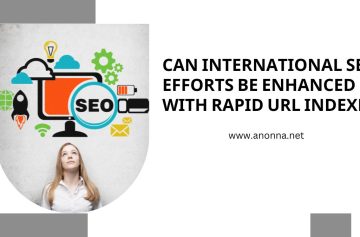
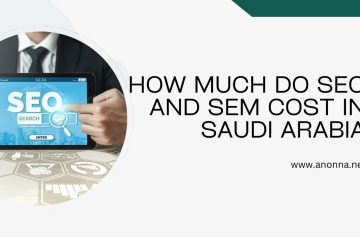
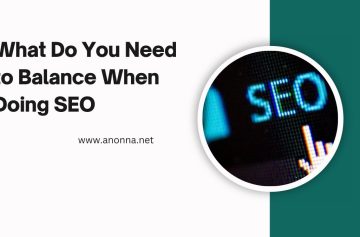
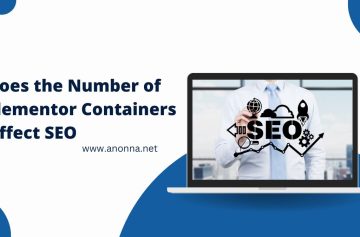
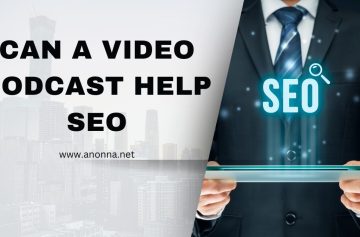
Add comment